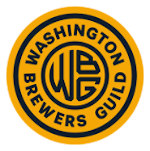Yes, there’s a crisis, but you should know more about the complex story behind it
The first story was from NBC News, dateline August 3rd. That story’s headline was, Craft breweries shutting down due to U.S. carbon dioxide shortage. “Breweries shutting down” was the hook. Since that story hit the wire last week, dozens of other TV news outlets picked it up and featured their own version of the story. From what I’ve seen, they are all falling short of telling viewers the real, full story. (Above: tapping a firkin of cask ale. No CO2 added.)
Now that the snowball of misinformation is really rolling, and because this is a beer-focused news and information source, I want you to have a broader understanding. I also want readers to recognize how some breweries are avoiding the crisis. Yes, in fact, there is a CO2 shortage. It’s a serious problem but it is not necessarily new. (We first reported on the situation in April 2020.)
The price of CO2 has skyrocketed as demand outpaces supply. Availability is also a concern. Breweries use a lot of CO2. More than bubbles in your beer, CO2 plays a critical role in a number of different aspects of beer production and packaging. It moves beer around the brewhouse from vessel to vessel, protects the beer from oxidation, and has other roles.
Why the Shortage?
The recent spate of news stories asserted that the CO2 shortage is due to a contaminated source: Jackson Dome in Mississippi, one of the nation’s largest naturally occurring CO2 sources. It’s like an aquifer of CO2. Apparently, it is contaminated with sulfur, but that’s only one piece of the story and does not really explain the overall situation.
“The supply of CO2 has remained tight since the shortages in the Spring of 2020,” said a recent report from the Brewers Association, which represents the nation’s small, independent breweries. “Reduced deliveries and force majeures have remained common in various regions throughout the U.S. over the past two years… Even more problematic, a major natural source of CO2, the Jackson Dome area in Mississippi, is facing a contamination issue… This current shortage is most acute in the southeastern and central parts of the country.”
It’s bad news, for sure, but Jackson Dome is not the primary source of the nation’s CO2. Most food-grade CO2 used by the beer industry is not naturally occurring. Rather, it is a byproduct of industrial processes.
I should point out that the largest breweries have long utilized CO2-capture systems, making use of the CO2 produced by their own processes, and are not impacted by the shortages. With emerging technology, there are now smaller systems available and some breweries are utilizing such systems. (I talk a bit more about CO2-capture systems at the end of this story.)
Where’s it Come From?
An official, rather geeky explanation. The commercial carbon dioxide used in beer and other food products is recovered from industrial plants which produce hydrogen or ammonia from natural gas, coal, and hydrocarbon feedstock. Corn-to-ethanol plants are also a major source for CO2 recovery. CO2-rich natural gas reservoirs are another source of recoverable carbon dioxide.
The Connection Between Ammonia and CO2
This gets complicated and I am, admittedly, dumbing things down a bit. Factories that produce ammonia are the leading source of CO2. Refineries that produce gasoline are the next largest source of CO2. In recent years, the production of both ammonia and ethanol has fallen. Thus, a CO2 shortage.
The world’s ammonia supply is fragile right now. Primarily, ammonia is used for fertilizer, but this story isn’t about fertilizer. In Europe, a significant portion of the ammonia supply comes from Russia and companies controlled by oligarchs. Sanctions and the other impacts of the war in Ukraine have caused prices to soar as supply falls short of demand. Ammonia production is also tied to the availability of natural gas, which is also a problem in Europe these days.
Like I said, it’s complicated. Here in North America, it’s been reported that two major ammonia production facilities are currently closed for maintenance and upgrades, which industry insiders cite as one of the broken links in the North American CO2 supply chain.
The Connection Between Gasoline and CO2
Let’s switch focus to ethanol, which is a key ingredient in gasoline. When less gasoline is produced, less ethanol is produced. When less ethanol is produced, less CO2 is produced. When the pandemic hit, people parked their cars and stayed at home. Oil companies responded by massively reducing gasoline production. Less gasoline production, less ethanol production, and less CO2 production.
Now that we are all driving our cars again, oil companies have been slow to ramp production back up to pre-pandemic levels. Some folks, including some members of Congress, suggest that oil companies are intentionally dragging their feet, keeping demand high and supply low in order to keep gas prices high and keep their profits at record levels, as they’ve been lately. Profiteering and greed aside, all that matters to us is that less gas production means less CO2 production.
COVID-19 Vaccine and CO2
Another rather unexpected factor is the vaccine produced by Pfizer, which requires deep refrigeration when transported. Remember when that was in the news? In order to transport vast quantities of the vaccine around the world, vast quantities of dry ice are required. Dry ice is CO2 in its solid form.
Dry ice is made by liquefying carbon dioxide and injecting it into a holding tank, where it’s frozen at a temperature of -109° F and compressed into solid ice. For vaccine transportation, it is formed into large blocks. As is, large enough to fill the cargo hold of an airplane. More CO2 used for dry ice, less CO2 used for beer.
The Point
There are a lot of moving pieces in the CO2 supply chain and I’ve discussed just of few. My most important point, there are other forces at work, not just the contamination at Jackson Dome. Hopefully, CO2 production returns to normal levels in the near future; however, a world with less gasoline and less ammonia does sound rather lovely, so long as there’s beer.
In Closing, Look at the Bright Side
If it bleeds it leads. Yes, it is a crisis. Yes, it’s a big problem. Yes, a story about a brewery going out of business will grab people’s attention better than a story about a brewery prospering in the face of challenges. There’s no value in mentioning that there are over 10,000 breweries in the USA that are not going out of business due to the CO2 shortage. If it bleeds, it leads.
Some breweries are taking advantage of ways to capture their own CO2. After all, CO2 is a byproduct of fermentation. Until recent years, these capture systems were only used by the largest breweries, but that’s changed and there are now systems appropriate for smaller craft breweries.
The leader in this space is Earthly Labs, a company based in Austin, Texas. The systems that it offers, and others like it, are a bit costly but as CO2 prices rise, the investment is starting to make more economic sense. (I’ve heard there are grants available since a CO2-capture system is an eco-friendly choice.) I am not in the business of selling those systems, but ask Google about CO2-capture technology for craft breweries.
One brewery taking advantage of the new technology is Icicle Brewing in Leavenworth, Washington. I did a Zoom-style interview with the folks at Icicle Brewing during the lockdowns. We talked about the new CO2-capture technology. You can watch that interview below or see it on YouTube.
Jump to the 23-minute mark if you want to hear just the CO2 part of the conversation. You can also read more about these systems in a story we published back in 2019.

































